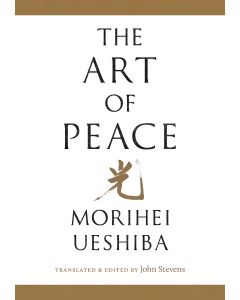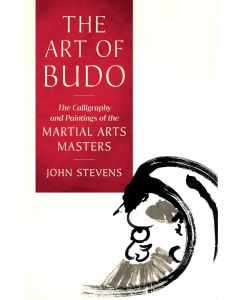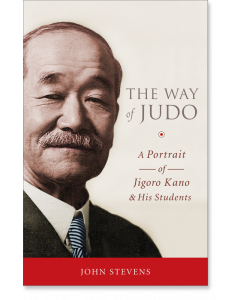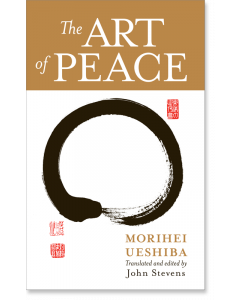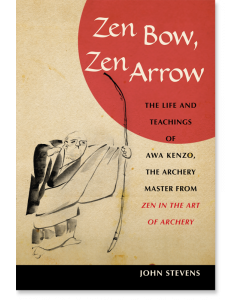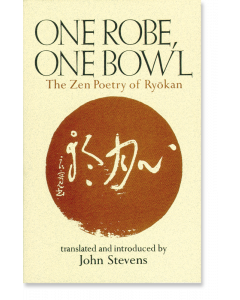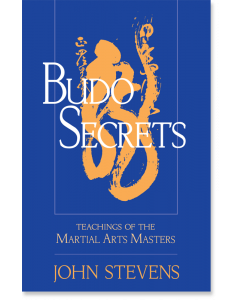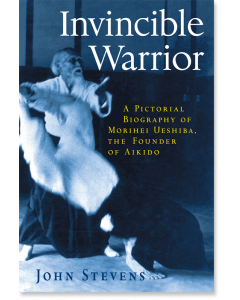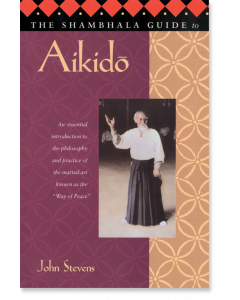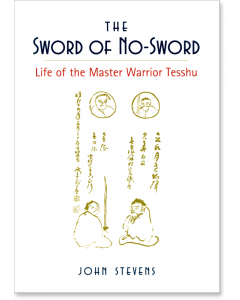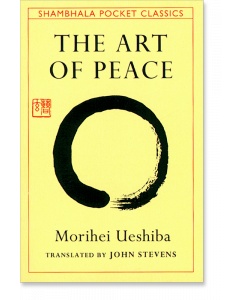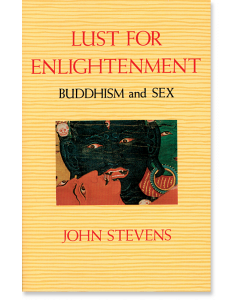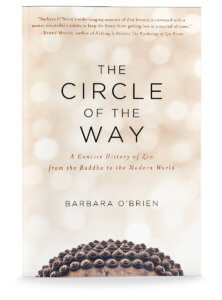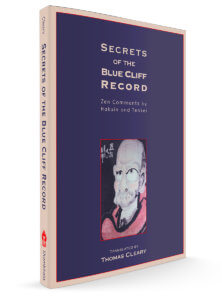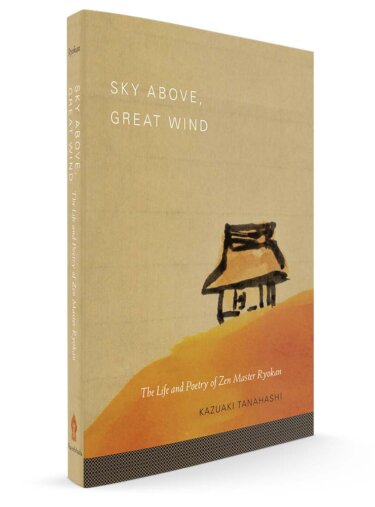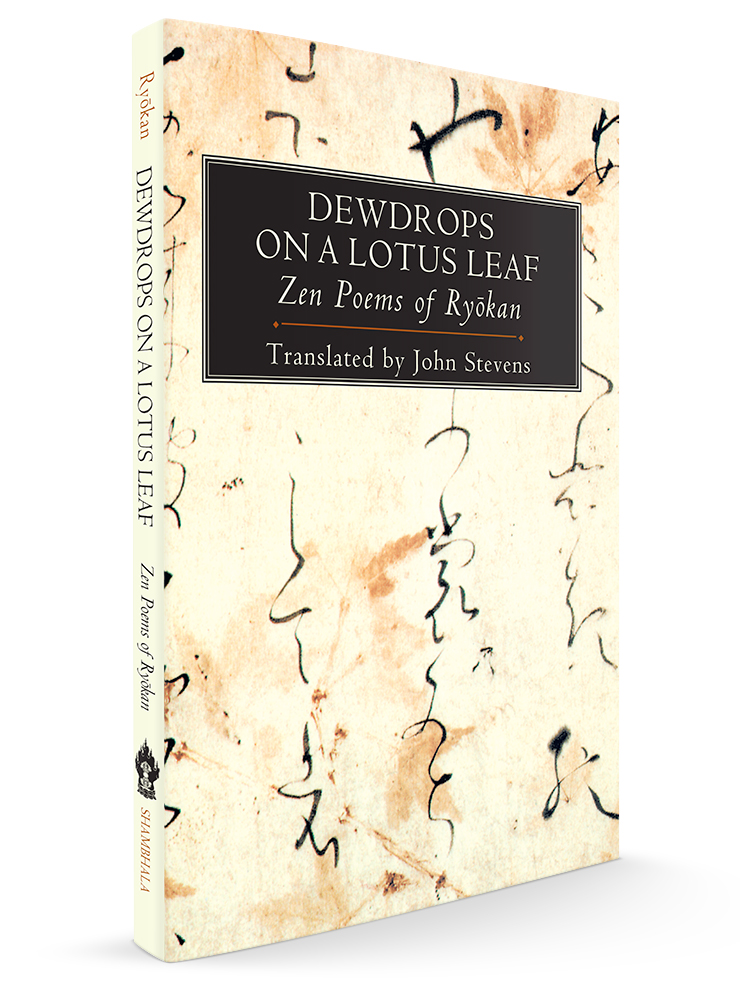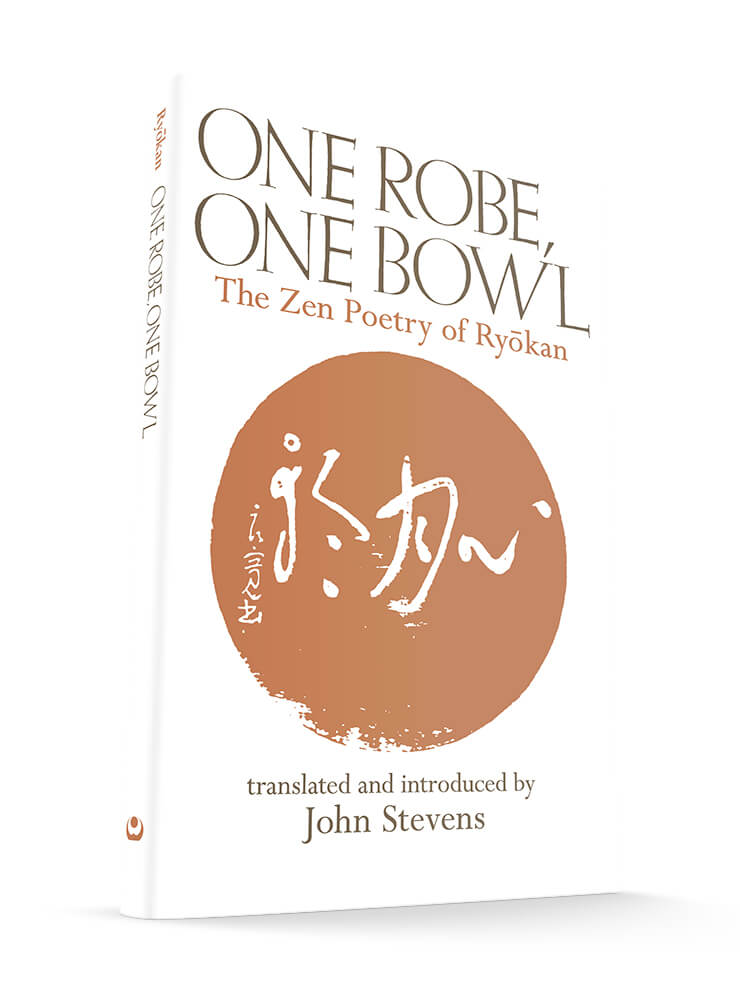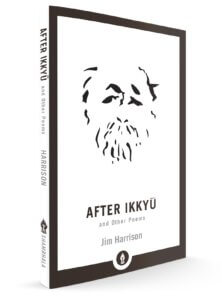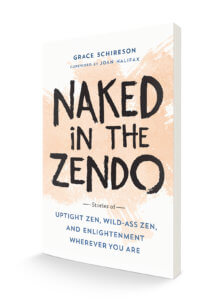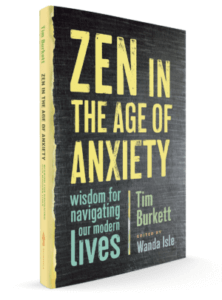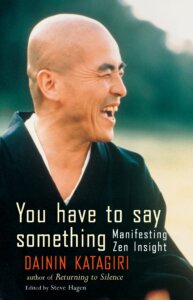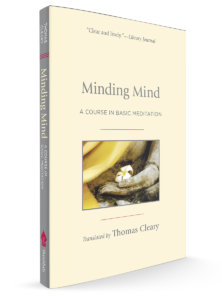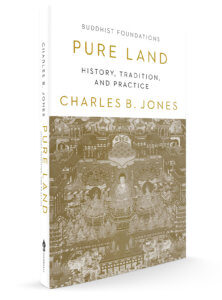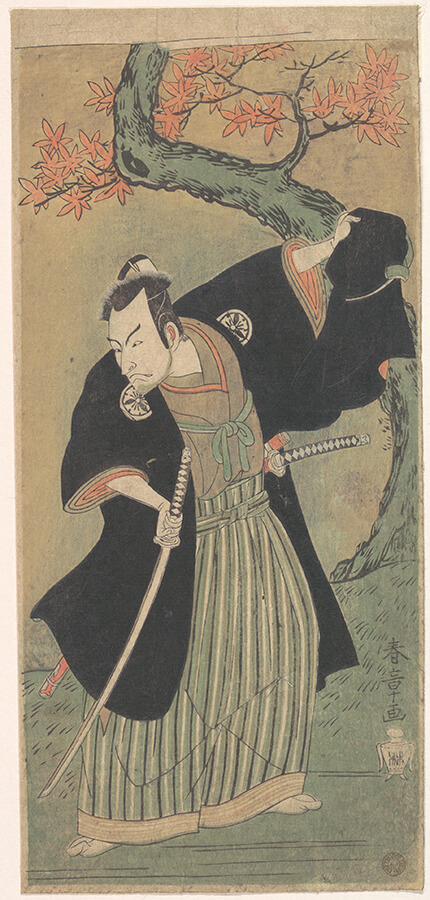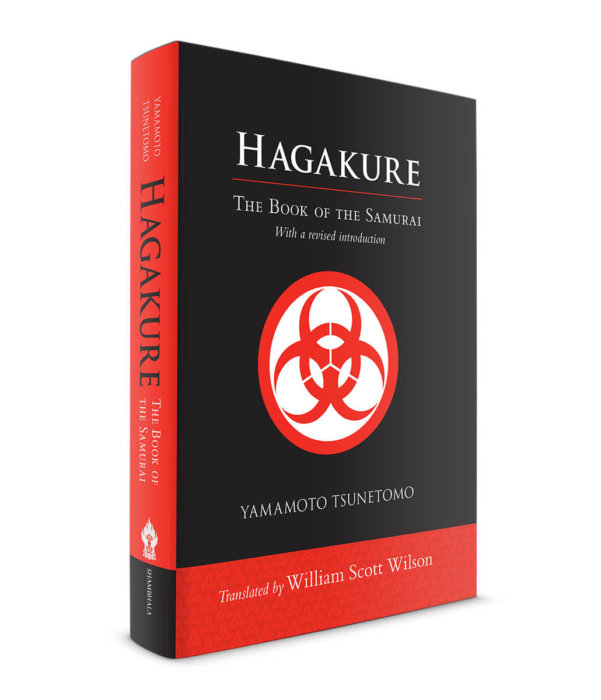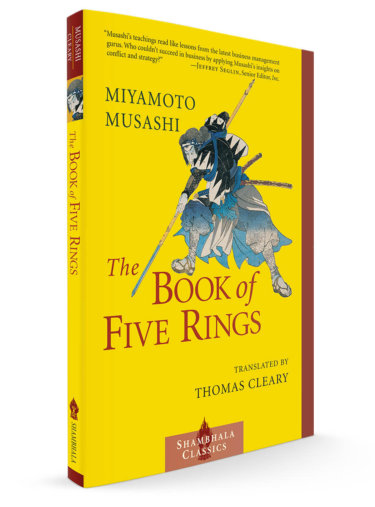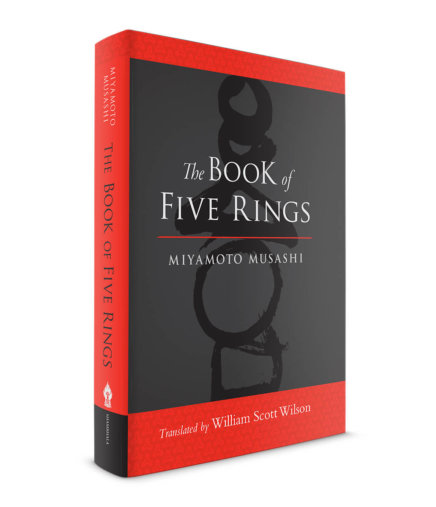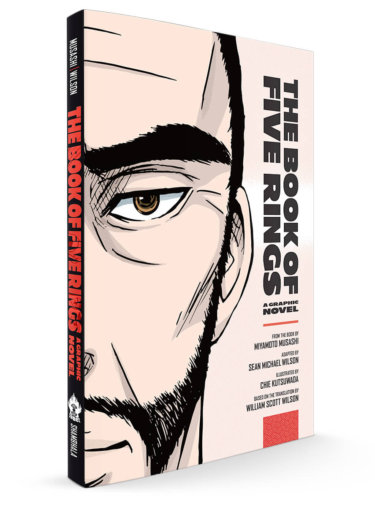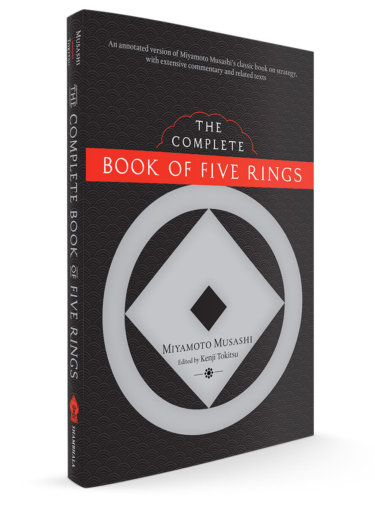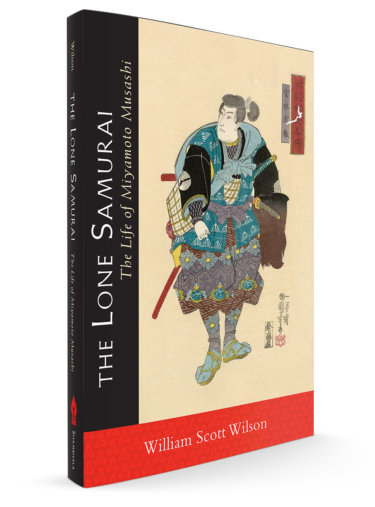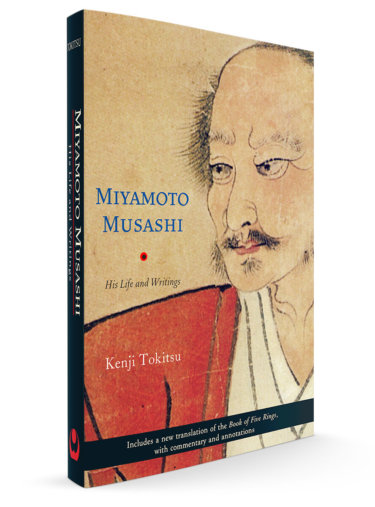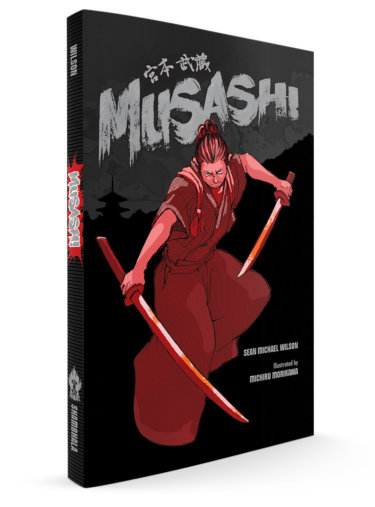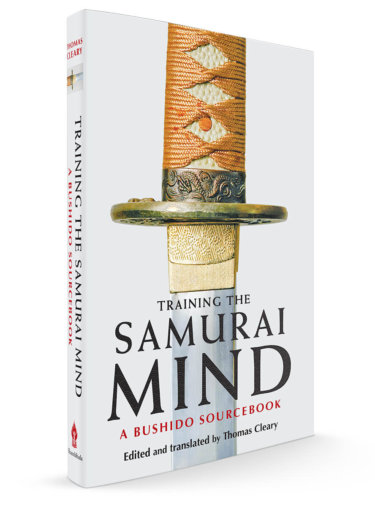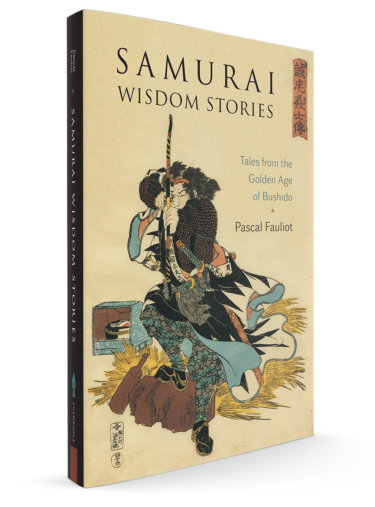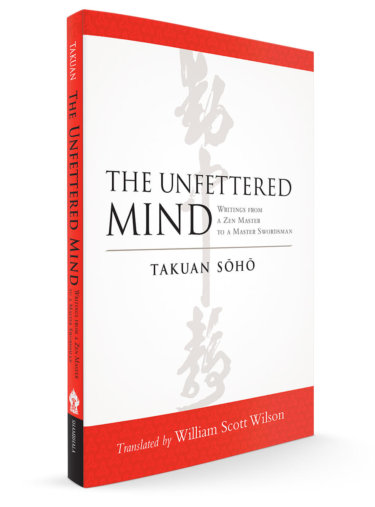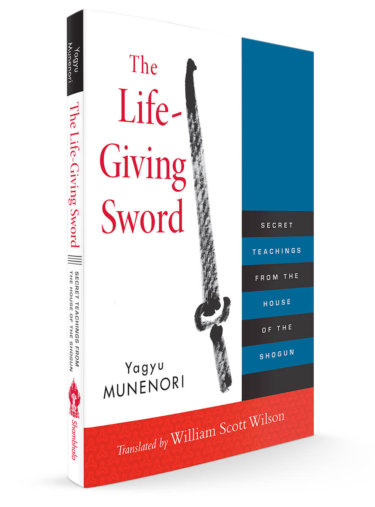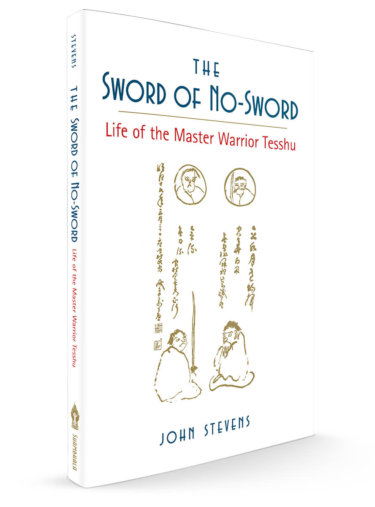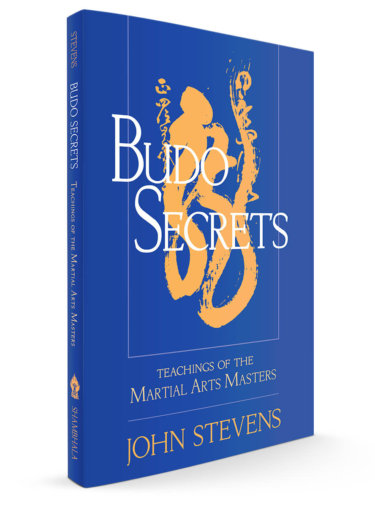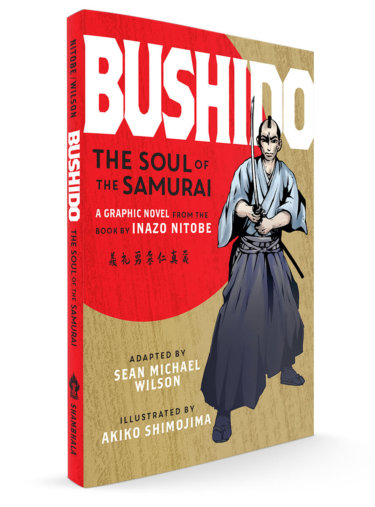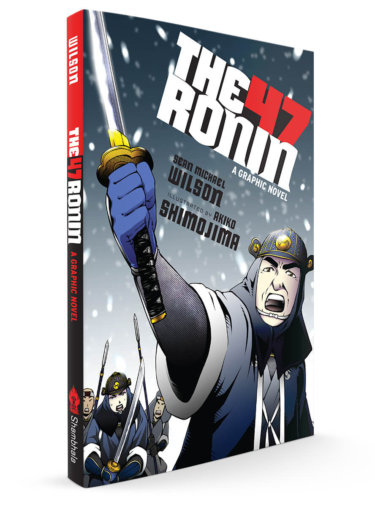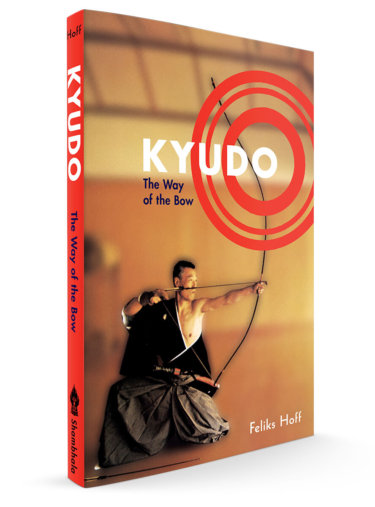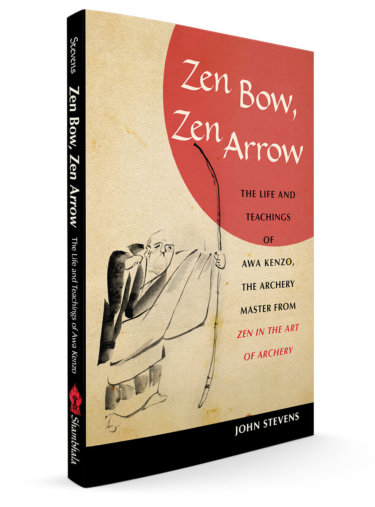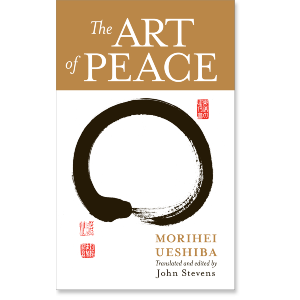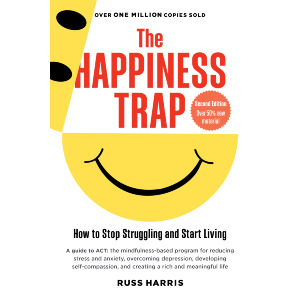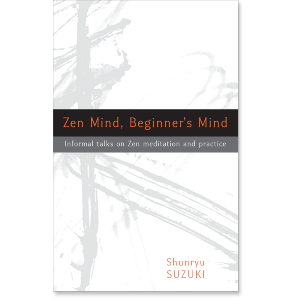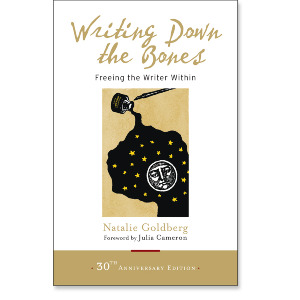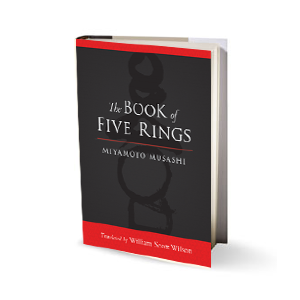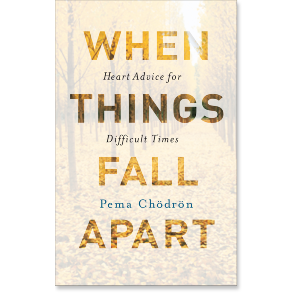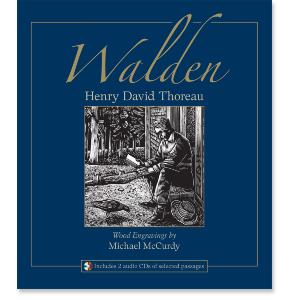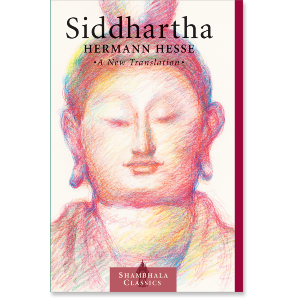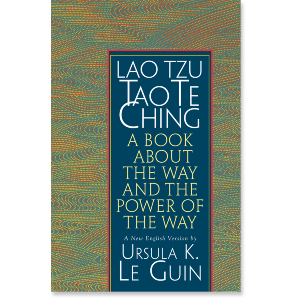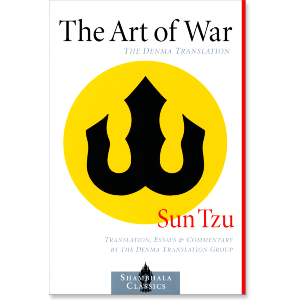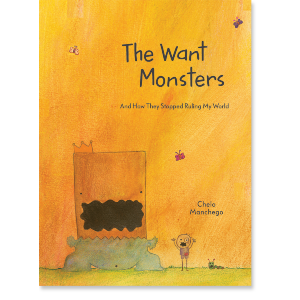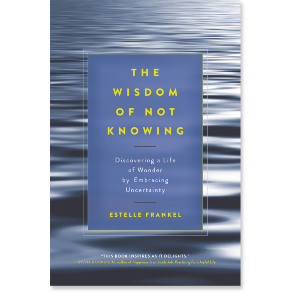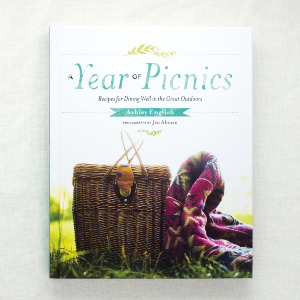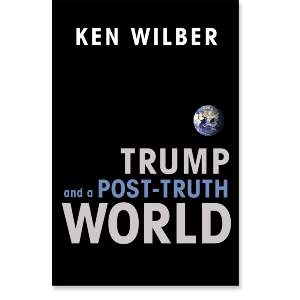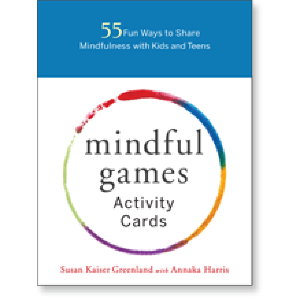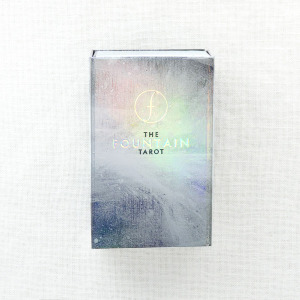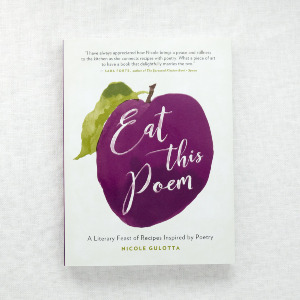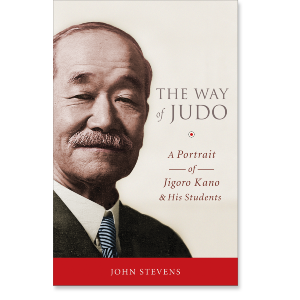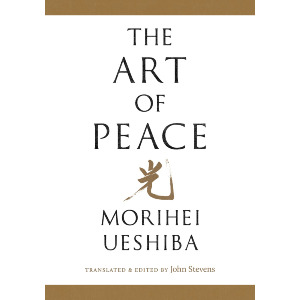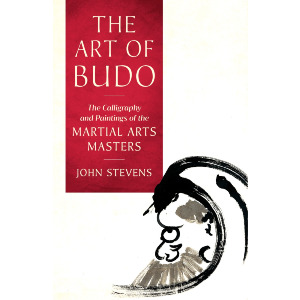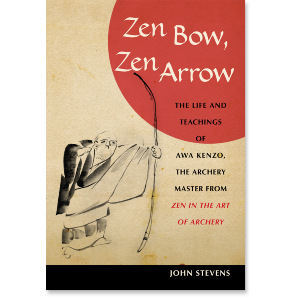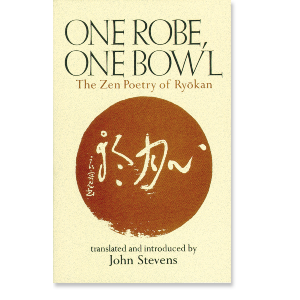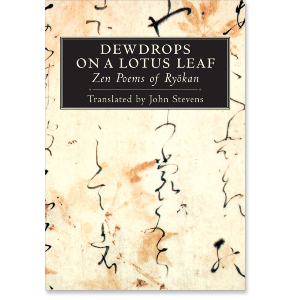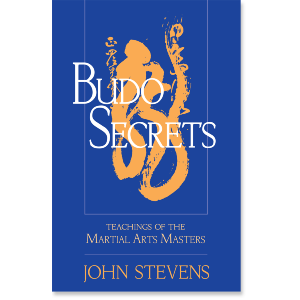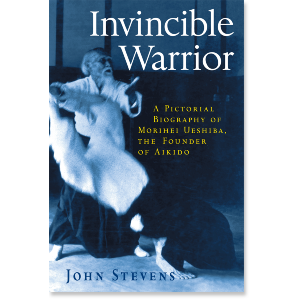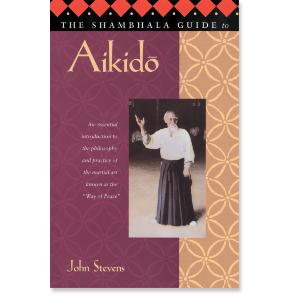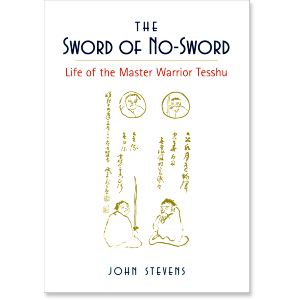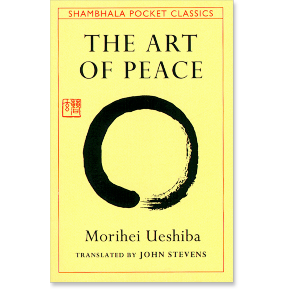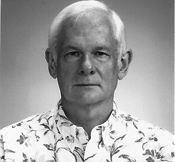

John Stevens
JOHN STEVENS is a Zen priest and was a professor of Buddhist Studies and Aikido instructor at Tohoku Fukushi University in Sendai, Japan, where he lived for thirty-five years. He is the author or translator of over forty books on Zen artists and their poetry, painting, and calligraphy, as well as on Aikido, swordsmanship, and other Japanese martial arts traditions. He lives in Honolulu, Hawaii.
John Stevens
-
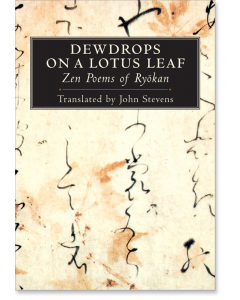 Dewdrops on a Lotus Leaf$18.95- Paperback
Dewdrops on a Lotus Leaf$18.95- PaperbackTranslated by John Stevens
Illustrated by Koshi no Sengai
- Buddhist Art 2item
- Buddhist Philosophy 1 item
- Chan/Chinese Zen 1 item
- Japanese Zen 3item
- Zen archery 1 item
- Sexuality 1 item
- Buddhist Poetry 2item
- Aikido 5item
- Budo 2item
- Judo 1 item
- Kyudo 1 item
- Swordsmanship 1 item
- Nature & Environment 2item
- Biography 1 item
- Health 1 item
- Eastern Philosophy 1 item
- Calligraphy 1 item
- Leadership 1 item
- Japanese Culture 2item
GUIDES
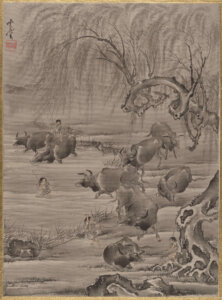
Zen in Japan: Up to the Meiji Restoration

This is part of a series of articles on the arc of Zen thought, practice, and history, as presented in The Circle of the Way: A Concise History of Zen from the Buddha to the Modern World. You can start at the beginning of this series or simply explore from here.
Explore Zen Buddhism: A Reader's Guide to the Great Works
Overview
Chan in China
- The Works of the Chan and Zen Patriarchs
- The Works of Zen in the Tang Dynasty (618-907)
- The Works of Zen in the Song Dynasty (960 - 1279)
- The Great Koan Collections
Zen in Korea
Zen in Japan
- Early Zen in Japan
- Dogen: A Guide to His Works
- Rinzai Zen
- Hakuin Ekaku: A Reader's Guide
- The Samurai and Zen
> Zen in Japan up to the Meiji Restoration
Additional Resources
- The Heart Sutra: A Reader’s Guide
- Zen in the Modern World (Coming Soon)
- Foundational Sutras and Texts of Zen (Coming Soon)
- Zen and Tea
The period after Dogen and the early period of Zen saw rich developments, including of course the Rinzai school and the Samurai which are covered in the sister guides to this article. Here are some of the works we publish from after the early period up to the 19th century Meiji Restoration when changes in power made for a more challenging environment for Zen practitioners and institutions throughout Japan.
Secrets of the Blue Cliff Record: Zen Comments by Hakuin and Tenkei
Secrets of the Blue Cliff Record is a fresh translation featuring newly translated commentary from Hakuin of the Rinzai sect of Zen and Tenkei Denson (1648–1735) of the Soto sect of Zen.
Ryokan
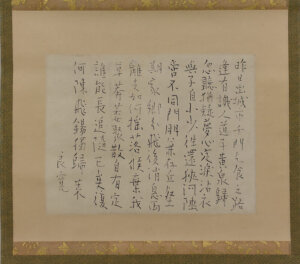
Chinese Poem Lamenting the Death of a Friend by Ryokan from the Met
Ryokan (1758–1831) is, along with Dogen and Hakuin, one of the three giants of Zen in Japan. But unlike his two renowned colleagues, Ryokan was a societal dropout, living mostly as a hermit and a beggar. He was never head of a monastery or temple. He liked playing with children. He had no dharma heir. Even so, people recognized the depth of his realization, and he was sought out by people of all walks of life for the teaching to be experienced in just being around him. His poetry and art were wildly popular even in his lifetime. He is now regarded as one of the greatest poets of the Edo Period, along with Basho, Buson, and Issa.
Sky Above, Great Wind: The Life and Poetry of Zen Master Ryokan
He was also a master artist-calligrapher with a very distinctive style, due mostly to his unique and irrepressible spirit, but also because he was so poor he didn’t usually have materials: his distinctive thin line was due to the fact that he often used twigs rather than the brushes he couldn’t afford. He was said to practice his brushwork with his fingers in the air when he didn’t have any paper. There are hilarious stories about how people tried to trick him into doing art for them, and about how he frustrated their attempts. As an old man, he fell in love with a young Zen nun who also became his student. His affection for her colors the mature poems of his late period. This collection contains more than 140 of Ryokan’s poems, with selections of his art, and of the very funny anecdotes about him.
Dewdrops on a Lotus Leaf: Zen Poems of Ryokan
Deceptively simple, Ryokan's poems transcend artifice, presenting spontaneous expressions of pure Zen spirit. Like his contemporary Thoreau, Ryokan celebrates nature and the natural life, but his poems touch the whole range of human experience: joy and sadness, pleasure and pain, enlightenment and illusion, love and loneliness. This collection of translations reflects the full spectrum of Ryokan's spiritual and poetic vision, including Japanese haiku, longer folk songs, and Chinese-style verse. Fifteen ink paintings by Koshi no Sengai (1895–1958) complement these translations and beautifully depict the spirit of this famous poet.
One Robe, One Bowl: The Zen Poetry of Ryokan
The hermit-monk Ryokan, long beloved in Japan both for his poetry and for his character, belongs in the tradition of the great Zen eccentrics of China and Japan. His reclusive life and celebration of nature and the natural life also bring to mind his younger American contemporary, Thoreau. Ryokan's poetry is that of the mature Zen master, its deceptive simplicity revealing an art that surpasses artifice.
Ikkyu

Twilight Landscape
In the Style of Ikkyū Sōjun Japanese. From the Met.
Finally, there is the figure of Ikkyu (1394–1481). While we do not have any stand-alone works on or by him, he appears in many, many works. In The Circle of the Way, he gets a few pages that begins:
Of all Muromachi-period Zen monastics, with all of their talent and accomplishments, the monk most well known today was something of a black sheep. Ikkyu Sojun (1394–1481) remains so popular in Japan that he has been portrayed in anime and the popular graphic art of manga.
Peter Matthiessen, In Nine-Headed Dragon River: Zen Journals, adds more color with his flowing prose, describing him as
A bastard son of the emperor, pauper, poet, twice-failed suicide, and Zen master, enlightened at last by the harsh call of a crow. At eighty-one Ikkyu became the iconoclastic abbot of Daitoku-ji. ('For fifty years I was a man wearing straw raincoat and umbrella-hat; I feel grief and shame now at this purple robe.') His 'mad' behavior was perhaps his way of disrupting the corrupt and feeble Zen he saw around him: 'An insane man of mad temper raises a mad air,' he wrote. He also said, 'Having no destination, I am never lost.' One infatuated scholar has called him 'the most remarkable monk in the history of Japanese Buddhism, the only Japanese comparable to the great Chinese Zen masters, for example, Joshu, Rinzai, and Unmon.' Ikkyu found no one he could approve as his Dharma successor. Before his death, civil disorders caused the near obliteration of Kyoto, forcing Rinzai Zen to follow Soto from the decadent capital city into the countryside.
by Jim Harrison
A collection of poems inspired by Ikkyu by the great novelist and essayist Jim Harrison who said of this work,
The sequence After Ikkyu- was occasioned when Jack Turner passed along to me The Record of Tungshan and the new Master Yunmen, edited by Urs App. It was a dark period, and I spent a great deal of time with the books. They rattled me loose from the oppressive, poleaxed state of distraction we count as worldly success. But then we are not fueled by piths and gists but by practice—which is Yunmen’s unshakable point, among a thousand other harrowing ones. I was born a baby, what are these hundred suits of clothes I’m wearing?
Naked in the Zendo: Stories of Uptight Zen, Wild-Ass Zen, and Enlightenment Wherever You Are
While not by Ikkyu, he makes an appearance in this work over a few very entertaining and moving pages.
Zen in the Age of Anxiety: Wisdom for Navigating Our Modern Lives
Ikkyu makes an appearance for several pages of Tim Burkett's excellent work which includes translations, by John Stevens, of several of his poems
You Have to Say Something: Manifesting Zen Insight
Dainin Katagiri Roshi shares this story about Ikkyu in this work:
A man who was soon going to die wanted to see Zen master Ikkyu. He asked Ikkyu, ‘‘Am I going to die?’’ Instead of giving the usual words of comfort, Ikkyu said, ‘‘Your end is near. I am going to die, too. Others are going to die.’’ Ikkyu was saying that we can all share this suffering. Persons who are about to
die can share their suffering with us, and we can share our suffering with those who are about to die.Ikkyu’s statement comes from a deep understanding of human suffering. In facing your last moment, you can really share your life and your death.
Minding Mind: A Course in Basic Meditation
One of the meditation manuals in this work date from pre-Meiji Restoration Japan.
The second, An Elementary Talk on Zen, is attributed to Man-an, an old adept of a Soto school of Zen who is believed to have lived in the early seventeenth century. The Soto schools of Zen in that time traced their spiritual lineages back to Dogen and Ejo , but their doctrines and methods were not quite the same as the ancient masters’, reflecting later accretions from other schools.
Man-an’s work is very accessible and extremely interesting for the range of its content. In particular, it reflects a modern trend toward emphasis on meditation in action, which can be seen in China particularly from the eleventh century, in Korea from the twelfth century, and in Japan from the fourteenth century.
Pure Land: History, Tradition, and Practice
This recent work by Professor Charles B. Jones, a leading scholar on Pure Land Buddhism, goes into much detail of Pure Land and its intertined relationship with Zen. The sections on Japan include its introduction from China, Ryonin and the Yuzi Nenbutsu, Honen and Jodo Shu, Shinran and the Jodo Shinshu, and Ippen and the Jishu.
Continue to our next article in the series: A Readers Guide to the Heart Sutra >
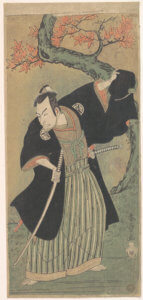

The Samurai and Zen
This is part of a series of articles on the arc of Zen thought, practice, and history, as presented in The Circle of the Way: A Concise History of Zen from the Buddha to the Modern World. You can start at the beginning of this series or simply explore from here.
Explore Zen Buddhism: A Reader's Guide to the Great Works
Overview
Chan in China
- The Works of the Chan and Zen Patriarchs
- The Works of Zen in the Tang Dynasty (618-907)
- The Works of Zen in the Song Dynasty (960 - 1279)
- The Great Koan Collections
Zen in Korea
Zen in Japan
> The Samurai and Zen
Additional Resources
- The Heart Sutra: A Reader’s Guide
- Zen in the Modern World (Coming Soon)
- Foundational Sutras and Texts of Zen (Coming Soon)
- Zen and Tea
The interplay of martial arts and Zen go back a long way—think of the stories of Bodhidharma meeting his successor Huike at Shaolin Temple. In The Circle of the Way, readers discover the so-called "Warrior Monks" or Shuto in the eleventh century, later called the Sohei. Then there was the intricate relationship between the samurai and Zen.
Thomas Cleary explores the many dimensions and dynamics of the Samurai—Zen relationship:
The potency of Zen Buddhism in particular was recognized by the new military masters of Japan, both as a cultural base of political influence and a psychological training system for warriors. Many of the soldier-samurai of the lower orders, in contrast, were drawn to the emergent Pure Land sects of Buddhism that proposed eternal life after death for the faithful.
Although Buddhism is ostensibly the only one of the Japanese religious and philosophical traditions featuring an explicit prohibition of killing, this proscription was not considered applicable to soldier-monks in monastic armies envisioned as protectors of Buddhism, nor to samurai in their role as police and protectors of society and state. According to the seventeenth-century Zen master Bankei,
Although there is killing such as the striking down of enemies in advance of the ruler, to destroy evil people to keep order in the world is the normal task of samurai, so such acts are not called murder on the part of samurai. Only when they contrive to kill for personal reasons, due to their own conceits, motivated by selfish desires, does it become murder. (Bankei Zenji Hogo).
Hagakure: The Book of the Samurai
Living and dying with bravery and honor is at the heart of Hagakure, a series of texts written by an eighteenth-century samurai, Yamamoto Tsunetomo. It is a window into the samurai mind, illuminating the concept of bushido (the Way of the Warrior), which dictated how samurai were expected to behave, conduct themselves, live, and die. While Hagakure was for many years a secret text known only to the warrior vassals of the Nabeshima clan to which the author belonged, it later came to be recognized as a classic exposition of samurai thought.
The original Hagakure consists of over 1,300 short texts that Tsunetomo dictated to a younger samurai over a seven-year period. William Scott Wilson has selected and translated here three hundred of the most representative of those texts to create an accessible distillation of this guide for samurai. No other translator has so thoroughly and eruditely rendered this text into English.
For this edition, Wilson has added a new introduction that casts Hagakure in a different light than ever before and focuses on Zen. Tsunetomo refers to bushido as “the Way of death,” a description that has held a morbid fascination for readers over the years. But in Tsunetomo’s time, bushido was a nuanced concept that related heavily to the Zen concept of muga, the “death” of the ego. Wilson’s revised introduction gives the historical and philosophical background for that more metaphorical reading of Hagakure, and through this lens, the classic takes on a fresh and nuanced appeal.
Musashi and the Book of Five Rings
Miyamoto Musashi lived in Japan in the 1600s and was an undefeated dueler, a masterless samurai, and an independent teacher. He is a towering figure in Samurai history and his Book of Five Rings is one of the classics of Samurai literature. We have three translations as well as a graphic novel, and several works on Mushashi himself.
The Book of Five Rings: A Classic Text on the Japanese Way of the Sword
Thomas Cleary’s is an accessible translation, free of jargon, with an introduction that presents the spiritual background of the warrior tradition. Along with Musashi’s text, Cleary translates another important Japanese classic on leadership and strategy: The Book of Family Traditions on the Art of War by Yagyu Munenori, which highlights the ethical and spiritual insights of Taoism and Zen as they apply to the way of the warrior.
William Scott Wilson’s translation is faithful to the original seventeenth-century Japanese text while being wonderfully clear and readable. His scholarship and insight into the deep meaning of this classic are evident in his introduction and notes to the text. This edition also includes a translation of one of Musashi’s earlier writings, “The Way of Walking Alone,” and calligraphy by Japanese artist Shiro Tsujimura.
The Book of Five Rings: A Graphic Novel
This graphic novel version of The Book of Five Rings, the iconic book of confrontation and victory by the famed seventeenth-century duelist and undefeated samurai Miyamoto Musashi, illuminates this brilliant manifesto, which has long inspired martial artists and anyone interested in cultivating a strategic mind. With evocative drawings and a distilled but faithful text adapted by acclaimed manga writer Sean Michael Wilson, The Book of Five Rings comes alive both as a guide to swordsmanship and strategy, and as a view into Musashi’s world.
The Complete Book of Five Rings
An authoritative version of Musashi’s classic, translated and annotated by a modern martial arts master, Kenji Tokitsu. Tokitsu has spent most of his life researching the legendary samurai swordsman and his works, and in this book he illuminates this seminal text, along with several other works by Musashi. These include “The Mirror of the Way of Strategy,” which Musashi wrote when he was in his twenties; “Thirty-five Instructions on Strategy,” and “Forty-two Instructions on Strategy,” which were precursors to The Book of Five Rings; and “The Way to Be Followed Alone,” which Musashi wrote just days before his death. Read together, these five texts give readers an unusually detailed, nuanced view of Musashi’s ideas on swordsmanship, strategy, and self-cultivation.
Tokitsu puts all these writings into historical and philosophical context and makes them accessible and relevant to today’s readers and martial arts students. Tokitsu understands Musashi’s writings—and Musashi as a martial artist—unusually well and is able to provide a rare insight into the man and his historical contribution.
The Lone Samurai: The Life of Miyamoto Musashi
Here, respected translator and expert on samurai culture William Scott Wilson has created both a vivid account of a fascinating period in feudal Japan and a portrait of the courageous, iconoclastic samurai who wrestled with philosophical and spiritual ideas that are as relevant today as they were in his time. For Musashi, the way of the martial arts was about mastery of the mind rather than simply technical prowess—and it is this path to mastery that is the core teaching in his Book of Five Rings. This volume includes supplemental material on Musashi’s legacy as a martial arts icon, his impact on literature and film, and the influence of his Book of Five Rings.
Miyato Musashi: His Life and Writings
Miyamoto Musashi, who lived in Japan in the fifteenth century, was a renowned samurai warrior. He has become a martial arts icon, known not just as an undefeated dueler, but also as a master of battlefield strategy. Kenji Tokitsu turns a critical eye on Musashi's life and writings, separating fact from fiction, and giving a clear picture of the man behind the myth.
Musashi's best-known work, The Book of Five Rings, provides timeless insight into the nature of conflict. Tokitsu translates and provides extensive commentary on that popular work, as well as three other short texts on strategy that were written before it, and a longer, later work entitled “The Way to Be Followed Alone.” Tokitsu is a thoughtful and informed guide, putting the historical and philosophical aspects of the text into context, and illuminating the etymological nuances of particular Japanese words and phrases. As a modern martial artist and a scholar, Tokitsu provides a view of Musashi’s life and ideas that is accessible and relevant to today's readers and martial arts students.
Miyamoto Musashi, the legendary samurai, is known throughout the world as a master swordsman, a spiritual seeker, and the author of the classic Book of Five Rings. This graphic novel treatment of his amazing life is both a vivid account of a fascinating period in feudal Japan and a portrait of courageous, iconoclastic samurai who wrestled with philosophical and spiritual ideas that are as relevant today as they were in his time. For Musashi, the way of the martial arts was about mastery of the mind rather than simply technical prowess. Over 350 years after his death, Musashi still intrigues us—and his Book of Five Rings is essential reading for students of all martial arts and those interested in cultivating strategic mind.
Training the Samurai Mind: A Bushido Sourcebook
Thomas Cleary presents a rich collection of writings on bushido by warriors, scholars, political advisors, and educators from the fifteenth century through the nineteenth century that provide a comprehensive, historically rich view of samurai life and philosophy. Training the Samurai Mind gives an insider’s view of the samurai world: the moral and psychological development of the warrior, the ethical standards they were meant to uphold, their training in both martial arts and strategy, and the enormous role that the traditions of Shintoism, Buddhism, Confucianism, and Taoism had in influencing samurai ideals.
Samurai Wisdom Stories: Tales from the Golden Age of Bushido
This collection of twenty-eight traditional samurai stories illustrates all the facets of wisdom and knowledge that a true samurai must embody: martial, spiritual, psychological, ethical, philosophical, artistic, strategic, and political. Retold by martial artist and scholar Pascal Fauliot, these tales are set in the golden age of bushido and represent the pinnacle of traditional Japanese culture in which aristocratic tastes, feudal virtues, and martial skills come together with the implacable insights of Zen. They feature military leaders and strategists such as Oda Nobunaga, Toyotomi Hideyoshi, and Tokugawa Ieyasu; sword masters such as Yamaoka Tesshu; ronin; the warrior monk Benkei; and the ninja-samurai Kakei Juzo; among many others. Pithy and engaging, the collection includes tales of battle, strategy, loyalty conflicts, court intrigues, breakthroughs in a warrior’s development, and vengeance achieved or foregone. Each tale reveals a gesture or an outcome that represents greater insight or higher virtue—a hallmark of the samurai era.
The Unfettered Mind: Writings from a Zen Master to a Master Swordsman
This classic samurai-era text fused Japanese swordsmanship with Zen and influenced the direction that the art has taken ever since. Written by the seventeenth-century Zen master Takuan Soho (1573–1645), The Unfettered Mind is a book of advice on swordsmanship and the cultivation of right mind and intention. It was written as a guide for the samurai Yagyu Munenori, who was a great swordsman and rival to the legendary Miyamoto Musashi.
Takuan was a giant in the history of Zen; he was also a gardener, calligrapher, poet, author, adviser to samurai and shoguns, and a pivotal figure in Zen painting. He was known for his brilliance and acerbic wit. In these succinct and pointed essays, Takuan is concerned primarily with understanding and refining the mind—both generally and when faced with conflict. The Unfettered Mind was a major influence on the classic manifestos on swordsmanship that came after it, including Miyamoto Musashi's Book of Five Rings and Yagyu Munenori's Life-Giving Sword.
The Life-Giving Sword: Secret Teachings from the House of the Shogun
The legendary seventeenth-century swordsman Yagyu Munenori was the sword instructor and military and political adviser to two shoguns—and was a rival to the great Miyamoto Musashi. Despite his martial ability and his political power, Munenori spent his life immersed in Zen teachings and practice. These teachings formed the framework for his deeply spiritual approach to sword fighting; Munenori saw in the practice of the sword a way to transform the student into a total human being. The Life-Giving Sword is Munenori’s manifesto on his approach. His central themes are the “Life-Giving Sword”—the idea of controlling one’s opponent by spiritual readiness to fight rather than by actual fighting—and “No Sword,” which is the idea that the mind must be free of everything, even the sword itself, in order to get to the place of complete mastery. Munenori’s ideas are essential reading for martial artists of all kinds and can be applied to business and human relations as well.
The Sword of No-Sword: Life of the Master Warrior Tesshu
Master swordsman, calligrapher, and Zen practitioner, Yamoaka Tesshu is a seminal figure in martial arts history. John Stevens's biography is a fascinating, detailed account of Tesshu's remarkable life. From Tesshu's superhuman feats of endurance and keen perception in life-threatening situations, to his skillful handling of military affairs during the politically volatile era of early nineteenth-century Japan, Stevens recounts the stories that have made Tesshu a legend. This is the book all martial artists must own.
Budo Secrets: Teachings of the Martial Arts Masters
In budo—which can be translated as "the way of brave and enlightened activity"—martial arts and Zen merge at the highest level of skill. Budo Secrets contains the essential teachings of budo's greatest masters of Kendo, Karate, Judo, Aikido, and other disciplines. Timely and instructive, these writings are not just for martial artists—they're for anyone who wants to live life more courageously, with a greater sense of personal confidence and self-control, and with a deeper understanding of others.
John Stevens has gathered an eclectic and historically rich collection of teachings that include principles and practice guidelines from training manuals and transmission scrolls, excerpts of texts on budo philosophy, the connection with Zen, and instructional tales gathered from a number of sources. Since many of the martial arts masters were also fine painters and calligraphers and used brush and ink as a teaching medium, Stevens has included their artwork throughout with explanation and commentary.
Bushido: (Graphic Novel): The Soul of the Samurai
This graphic novel version of the cult classic Bushido brings the timeless secrets of the samurai to life. First published in the early 1900s, Bushido was the first book to introduce Westerners to the samurai ethos. Written by Inazo Nitobe, one of the foremost Japanese authors and educators of the time, it describes the characteristics and virtues that are associated with bushido—honor, courage, justice, loyalty, self-control—and explains the philosophy behind how samurai were educated and trained; the connection between the sword and the samurai; seppuku; and the position of women in samurai culture; among other themes. To this day, Bushido is considered a must-read for anyone who wants to understanding the soul of Japan and navigate their world with integrity and honor.
Here is the first historically accurate graphic-novel version of a legendary event in Japanese history. In the eighteenth century, forty-seven samurai avenged the death of their master in a plot involving over two years of secrecy. After succeeding in their mission, the masterless samurai all committed ritual suicide. The story, which is a national legend, remains a most potent example of Japan’s deeply rooted cultural imperatives of honor, persistence, loyalty, and sacrifice, and of bushido—the samurai code.
Kyudo, Samurai, and Zen
Kyudo is the martial art of archery that emerged from the samurai, and has a long history with Zen.
This is the authoritative guide to the technique and philosophy of the ancient art of Japanese archery. Originally a samurai discipline, kyudo integrates technical skill with the development of a completely focused and disciplined mind. Influenced by Shintoism and Zen, kyudo is a path of self-development and meditation that requires the archer to cultivate precision, a clear mind, and freedom from fear.
This detailed, clearly written guide is an indispensable reference for kyudo students and an excellent sourcebook for anyone interested in the history of archery or warfare. The author, Feliks Hoff, a kyudo practitioner for over thirty years, gives a historical and philosophical view of the art and offers practical exercises for cultivating the proper mindset for each shot; detailed instruction on proper form and technique; an overview of the etiquette, dress, and ceremonial aspects of kyudo; and a survey of the various types of equipment used.
Hoff presents the basic techniques of the Heki school of kyudo in step-by-step photographs. He also provides exercises for aiming and target shooting and lists common mistakes in form, technique, and concentration along with pointers on how to correct them. For more advanced students, Hoff includes a list of examination requirements and offers advice on teaching beginners.
Here are the inspirational life and teachings of Awa Kenzo (1880–1939), the Zen and kyudo (archery) master who gained worldwide renown after the publication of Eugen Herrigel's cult classic Zen in the Art of Archery in 1953. Kenzo lived and taught at a pivotal time in Japan's history, when martial arts were practiced primarily for self-cultivation, and his wise and penetrating instructions for practice (and life)—including aphorisms, poetry, instructional lists, and calligraphy—are infused with the spirit of Zen. Kenzo uses the metaphor of the bow and arrow to challenge the practitioner to look deeply into his or her own true nature.
Continue to the next article in the series: Zen in Japan up to the Meiji Restoration >

In thinking about year-end gifts, we want to share what YOU have to say.
Below are some lovely quotations from readers on their favorite Shambhala books.
Do you have one to add? Please comment at the bottom!

“This book showed me a different way, a way to devote discipline of both my body and mind.”
—Clint
“As a therapist, I recommend this to anyone seeking permanent life change realistically.”
—Paul
“If there is one book in my collection that I could give away to everyone, it would be this book.”
—Michael
“This book changed my life as a writer, a teacher of writing, and as an individual!”
—Laurie
“This is a foundational book for anyone interested in delving deeper into the richness of martial arts philosophy.”
—Shane
“This book set me on a path of healing that has continued to the present day.”
—Miv
“This is, plain and simply, an astonishing book.”
—Michael
“Pure, melodic, poetic, this book should be one of the first ones on the list for every serious reader.”
—Pawan
“Every time I read Tao Te Ching, the book feels new again, fresh, as if only just discovered.”
—Robin
“Makes you really appreciate the ideas of strength and courage and the power of emotions and desire in overcoming any obstacle you face.”
—Eman
“There is playfulness and joy on every page of this book, with a unique tone that has a distinctive voice and is full of heart.”
—Caspericus
“You will smile, cry, and be moved by the writings of a master storyteller.”
—Bruce
“Filled with beautiful photos, delightful recipes, and creative picnic themes, each page gives inspiration to get outdoors!”
—Carly
“This one hits the sweet spot for our busy lives with wonderful recipes of vegetarian dinners!”
—Alice
“Kino will motivate you to stick to the practice and walk the yogi path.”
—Julie
“A remarkable vision and an inspiring perspective of the challenges and opportunities in the chaotic, divisive, and evolving global cultures.”
—John
“I think this is a great way for beginners to get started in mindfulness without feeling overwhelmed.”
—D.
“Brilliant. Life-changing. Psycho-active. Very enlightening.”
—Mariëlle
“Beautiful artwork that is cohesive and inspiring, high-quality construction, and an informative and well-written manual.”
—Rachel
“Beautiful blend of memoir, cookbook, and reflections on living a thoughtful, food-enhanced life.”
—Kirsten
The Way of Judo: An Interview with John Stevens on Jigoro Kano
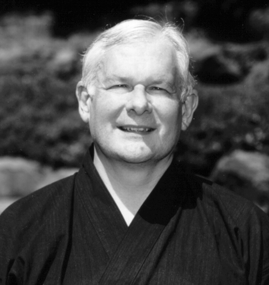 Shambhala: Why did you want to write about Jigoro Kano?
Shambhala: Why did you want to write about Jigoro Kano?
JS: Since I have written books on three of the other most important martial artist masters of the 20th century-Tesshu Yamaoka (kendo), Awa Kenzo (kyudo), and Morihei Ueshiba (aikido)-I felt it imperative to write a book on Jigoro Kano, the founder of Kodokan judo, to round out the picture.
Shambhala: How are the masters different?
JS: While both Tesshu and Awa based their teachings on Zen, and Morihei was a practitioner of esoteric Shinto, Kano was a Confucian thinker through and through. The other three masters believed that enlightenment was the key to the understanding of their art. The Kokodan Judo of Kano, on the other hand, stressed educational theory, rational thought, scientific principles, and practical application.
Shambhala: And what are the masters' similarities?
JS: All four saw their art not as primarily a martial art but as system for personal development and social responsibility. They all had the same goal.
Shambhala: What was Kano's martial art training like?
JS: Kano trained in jujutsu like a demon from age seventeen to around age thirty. He trained under three of the best jujutsu teachers of the day, and after he founded the Kodokan at the age of twenty-two he practiced intensely with every student who showed up. After that, he did not personally train much because of his extremely busy schedule as a head of the Kodokan, a university president, a constant world traveler, a member of the Diet, and a member of the International Olympic Committee. However, Kano continued to demonstrate old-time jujutsu once in a while-escaping a five man pin, throwing an opponent in a flash, and pinning a senior student so tightly that the overconfident fellow broke a rib when he foolishly tried to wriggle free. Although Kano had almost no experience with weapons himself, he organized a research group at the Kodokan specifically to engage in the study of the classical weapons systems of Japan.
Shambhala: In the chapter on "The Challenge of Creating Kodokan Judo " you discuss the many challenging issues that Kano had to deal with. What was the main problem?
JS: The abuse of formal competition. Kano instituted formal matches so that his trainees would learn how to lose-with grace, self-reflection, and as an educational tool-and not how to win at any cost. Kano decried the "winning at any cost " approach to judo that the majority of his students practiced. Late in his career, the exasperated Kano exclaimed, "What you all are doing is not judo! "
Shambhala: Much of your book is devoted to Kano's students.
JS: Yes, it had to be. Highlighting Kano's interaction with his students is crucial in order to tell his story. As a Confucian gentlemen and president of the National Teacher Training College, Kano himself lead an up-right, exemplary life but his students were a much more colorful, even rowdy lot. As for Kodokan Judo, Kano was the guiding light, but the technical elements were developed in conjunction with his senior students. It was a joint effort. In the social realm, one of his students established the Black Dragon Society, two of his students were elected prime minister, two of them became the richest entrepreneurs in the country, and one of them taught judo to a United States president.
Shambhala: You write quite a bit about Kano's Chinese students.
JS: Yes, many of the Chinese students who were taught at Kano's academy were very influential on Chinese history, yet this is a detail that is virtually unknown. For example, Mao's father-in-law had been a student of Kano's in Japan, and he taught Mao some of Kano's educational theories. Mao wrote a paper on Kano's ideas.
Shambhala: Was there a spiritual element to Kano's teaching?
JS: As a Confucian educator, Kano was always concerned with the social ramifications of his teaching. One of his key theories was jita kyoei "mutual benefit and well being. " Based on that ideal, Kano stressed creation of an "enlightened society, " rather than emphasizing the purely individual quest. Since Kano presented much of his teaching through calligraphy, a number of his calligraphies are illustrated in the book. Many of these speak to his social idealism.
Shambhala: What do you hope to convey in the The Way of Judo?
JS: I want my readers to be as inspired as I was by Kano's life and teaching. The deeper I went into Kano's story, the more I came to respect him. His career is fascinating, and I want people to have access to his full story.

